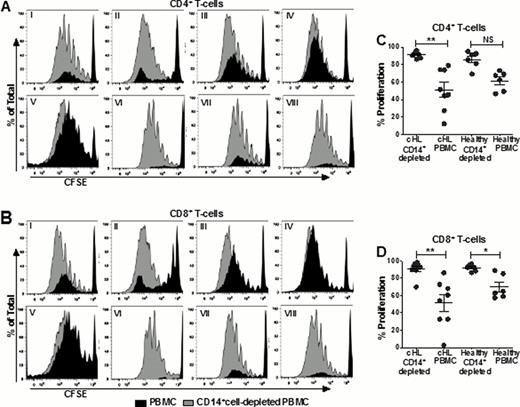Abstract
Abstract 49
The challenge in Hodgkin Lymphoma (HL) remains to tailor therapies to eradicate malignancy with minimal side-effects, and to simultaneously identify those patients in whom alternate strategies should be instituted early. There are currently no circulating disease response biomarkers for HL. Blood biomarkers may assist interpretation of PET/CT, and can also be performed at each consultation to assess disease response and detection of early relapse. Ideal blood biomarkers must be specific, sensitive, easy to assay and interpret, with rapid turnaround, high reproducibility and comparability between laboratories. Candidate biomarkers might arise either from Hodgkin-Reed Sternberg (HRS) cells or the non-malignant tumor-infiltrate. The relative kinetics of circulating tumor-specific versus tumor-infiltrating biomarkers during therapy has not been compared. HRS cells comprise a minority of the diseased node, in which benign CD163+ M2 macrophages are prominent. Although CD163+ cells within the malignant node may be prognostic, there is no data on serum CD163 (sCD163). The HRS-specific protein TARC (which drives intra-tumoral accumulation of reactive cells) is elevated in serum (sTARC) pre-therapy but its kinetics during therapy are unknown.
The Australasian Leukaemia & Lymphoma Group performed a prospective multi-centre observational study of sCD163 and sTARC in 221 samples from 47 HL patients (mean age: 36 years, range: 18–79; F:M 21:26). Results were compared to 21 age/gender matched healthy participants. Serum protein estimation was performed by ELISA. In EBER-ISH tissue positive patients, results were compared with plasma EBV-DNA (by real-time PCR). Blood was taken at five fixed time-points (prior, during and after therapy), and compared to disease response as adjudged by radiology, and with tissue levels by immunohistochemistry. Therapy was applied as per clinician's preference (85% ABVD, the remainder BEACOPP or ChlVPP).
Pre-therapy, both sCD163 and sTARC were markedly elevated compared to healthy and complete remission samples (all p<0.001). ROC analysis demonstrated they were highly sensitive and specific (sCD163 p<0.0001, AUC=0.8776 vs healthy; p=0.001, AUC=0.7333 vs remission; sTARC p<0.0001, AUC=0.9138 vs healthy; p<0.0001, AUC=0.8552 vs remission). Both sCD163 and sTARC were frequently elevated in patients with relapsed/refractory disease, whilst remaining below threshold in patients with equivocal (low avidity) PET scans of uncertain significance who subsequently remained in CR. However, when results are stratified by interim radiological assessment, sCD163 more accurately reflect disease response than sTARC whilst therapy was ongoing. Consistent with the relative abundance of tumor-infiltrating cells compared to HRS cells, sCD163 levels were 350-fold higher at pre-therapy compared to sTARC, and then declined less rapidly (than sTARC and plasma EBV-DNA) once chemotherapy had commenced. sCD163 (but not sTARC) strongly correlated with plasma EBV-DNA (r=0.8, p=0.001), and was associated with B symptoms, stage and low lymphocyte count. Tissue CD163 was significantly but modestly correlated with sCD163 and associated with Hasenclever score and the presence of early or advanced stage disease. Circulating CD163+ monocytes were elevated in patients, implicating sCD163 as only partially tumor-infiltrate derived. In experiments designed to investigate the association with lymphopenia, depleting CD163+ monocytes markedly enhanced both CD4+ and CD8+ T-cell proliferation (Figure 1: Histograms show [A] CD4+ and [B] CD8+ T-cell proliferation from eight HL patients [labelled I-VIII]. T-cell proliferation from CD14+ cell-depleted PBMC in grey and from non–depleted PBMC in black; [C] CD4+ and [D] CD8+ T-cell total percent proliferation above background), indicating monocyte-mediated immunosuppression.
We present the first study demonstrating that the tumor-infiltrate marker CD163 is elevated in the serum of HL patients. The combination of sCD163 with the tumor-specific marker sTARC by ELISA show promise as disease response biomarkers in HL. Furthermore, CD163+ monocytes mediate profound T-cell immunosuppression, indicating a potential therapeutic target.
No relevant conflicts of interest to declare.
Author notes
Asterisk with author names denotes non-ASH members.


